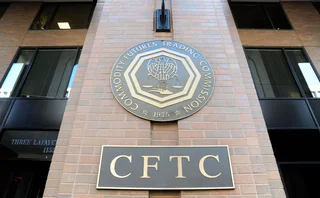
FDIC: return to profit fails to boost bank lending
Assistance from the US government has helped the country’s banking industry back into profit, but the improvement hasn’t been reflected in increased lending, says the Federal Deposit Insurance Corporation.
In its latest Quarterly Banking Profile the FDIC reported an aggregate net income for the banks it supervises of $914 million in Q4 2009, down from $2 billion in the third quarter but still a huge rebound from the $37.3 billion loss the industry suffered in the fourth quarter of 2008.
But the report has more bad news than good. Non-current loans and leases, mainly residential mortgages, continued to rise, hitting $391.3 billion – 5.37% of all loans by value, the highest level ever recorded.
And, the FDIC adds, the industry also reduced its coverage ratio – reserves as a fraction of non-current loans and leases – to a 28-year low of 58.1%. In other words, the banks only managed to scrape into the black by deciding not to increase their reserves in line with their problem loan books. Had they done so, it would have meant another $7.4 billion in reserves, resulting in the industry moving well into the red.
The report also painted a picture of an industry whose members are still far from secure: the FDIC’s “problem list” now includes 702 US banks, and 140 banks failed during 2009, the highest number since 1992.
Only users who have a paid subscription or are part of a corporate subscription are able to print or copy content.
To access these options, along with all other subscription benefits, please contact info@risk.net or view our subscription options here: http://subscriptions.risk.net/subscribe
You are currently unable to print this content. Please contact info@risk.net to find out more.
You are currently unable to copy this content. Please contact info@risk.net to find out more.
Copyright Infopro Digital Limited. All rights reserved.
As outlined in our terms and conditions, https://www.infopro-digital.com/terms-and-conditions/subscriptions/ (point 2.4), printing is limited to a single copy.
If you would like to purchase additional rights please email info@risk.net
Copyright Infopro Digital Limited. All rights reserved.
You may share this content using our article tools. As outlined in our terms and conditions, https://www.infopro-digital.com/terms-and-conditions/subscriptions/ (clause 2.4), an Authorised User may only make one copy of the materials for their own personal use. You must also comply with the restrictions in clause 2.5.
If you would like to purchase additional rights please email info@risk.net
More on Regulation
US Basel equivalence questioned as EU patience wears thin
MEPs say unfaithful US implementation of Basel III could trigger review of access to EU markets
The Term €STR transition: challenges and market readiness
The progress, challenges and factors shaping the adoption of Term €STR as financial institutions transition from Euribor
CFTC takes red pen to swaps rules, but don’t call it a rollback
Lawyers and ex-regs say agency is fine-tuning and clarifying regulations, not eliminating them
EU edges closer to calming FRTB fund-linked fray
Dealers say temporary solution is a step in the right direction but won’t fully resolve all issues
European Commission changes tune on proposed FRTB multiplier
Banks fear departure from original diversification factor undermines case for permanent relief
Supervisors should be mindful of geopolitical risks, says IMF
Shock events cause sizeable swings in asset pricing, institution’s latest report highlights
Bowman won’t commit to stress-testing the tariff shock
Nominated Fed vice-chair stonewalls calls to run ad hoc scenario similar to 2020 Covid test
Fed’s Bowman to ‘prioritise’ SLR exemption for US Treasuries
Reinstating Covid-era relief is a ‘no brainer’, dealers say, as bond markets reel from tariff chaos







